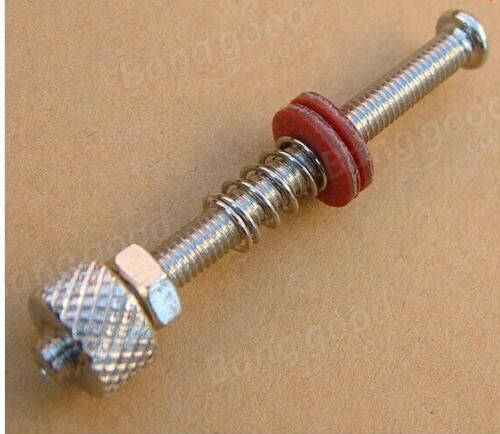Got a cooler I want to mount and came with some screws/springs to fit it and I have no idea how they work lol
They come packaged like this

And as far as I can tell the only way that makes sense to fit them is like this

With the screw tightened onto the PCB with the nut at the bottom and then the springs in between the thumb screws and cooler bracket?
The screws only came with 2 washers each - if that’s how it fits I will have to pick up some more washers as there should be 3 per screw. M
Now realised it’s probably supposed to be different from my pic and that the PCB is supposed to be tightened with the screw and nut with the 2 nylon washers, but the spring nearly pulls through the hole in the bracket when you tighten it with no washer on so will probably throw some on there
Am I correct there before I mount it wrong and screw my cards/CPU up lol?
They come packaged like this

And as far as I can tell the only way that makes sense to fit them is like this
With the screw tightened onto the PCB with the nut at the bottom and then the springs in between the thumb screws and cooler bracket?
The screws only came with 2 washers each - if that’s how it fits I will have to pick up some more washers as there should be 3 per screw. M
Now realised it’s probably supposed to be different from my pic and that the PCB is supposed to be tightened with the screw and nut with the 2 nylon washers, but the spring nearly pulls through the hole in the bracket when you tighten it with no washer on so will probably throw some on there
Am I correct there before I mount it wrong and screw my cards/CPU up lol?
Last edited:



 ) along with a length of 2mm copper plate (was £6.50 on ebay at the time). Using the stock cooler I made a template for the vrm area including enough mounting holes and then marked it out on the copper plate. Using a angle grinder I cut the plate to size, chamfered the edges and then drilled the mounting holes. Next I removed the baseplate from the smaller of the two motherboard vrm blocks and marked the holes that fixed it to the top on the plate that I had made. I then drilled the holes and countersunk them on the bottom so that the screw heads would sit flush with the base of the plate. I then fitted the vrm block top to my baseplate, added a pair of 90 degree fittings and had a working vrm block for my 780. It worked on the same principle as the original vrm block but with a much bigger baseplate. The actual block top was fitted over the part of the baseplate directly over the vrm's so it didn't really matter that a large part of the plate wasn't under the block as the main heat producing area was. My vrm temps went from the high 70's-low 80's under load down to the high 30's so it was a massive success. The memory chips were just cooled by Zalman memory heatsinks stuck on with Akasa thermal tape and cooled by case airflow.
) along with a length of 2mm copper plate (was £6.50 on ebay at the time). Using the stock cooler I made a template for the vrm area including enough mounting holes and then marked it out on the copper plate. Using a angle grinder I cut the plate to size, chamfered the edges and then drilled the mounting holes. Next I removed the baseplate from the smaller of the two motherboard vrm blocks and marked the holes that fixed it to the top on the plate that I had made. I then drilled the holes and countersunk them on the bottom so that the screw heads would sit flush with the base of the plate. I then fitted the vrm block top to my baseplate, added a pair of 90 degree fittings and had a working vrm block for my 780. It worked on the same principle as the original vrm block but with a much bigger baseplate. The actual block top was fitted over the part of the baseplate directly over the vrm's so it didn't really matter that a large part of the plate wasn't under the block as the main heat producing area was. My vrm temps went from the high 70's-low 80's under load down to the high 30's so it was a massive success. The memory chips were just cooled by Zalman memory heatsinks stuck on with Akasa thermal tape and cooled by case airflow.